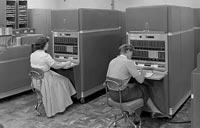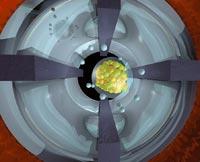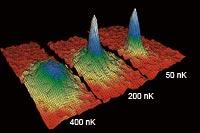Thanks Albert!

Einstein was a theoretical physicist, merely theoretical, but his theories have had a practical application. When he explained the relationship between matter and energy, for example, Einstein himself was clear that the energy proper to atoms could be used as a source of energy. Perhaps what I did not expect, at least at the beginning, was to be used for military purposes. And, precisely, the atomic bomb was the best-known application of Einstein's theories, which he harshly rejected.
He strongly condemned the atomic bomb exploding during World War II. But in that massacre Einstein also had some guilt. Years earlier, a group of scientists, including Einstein himself, wrote a letter to the President of the United States, Franklin Roosevelt, in which they warned that Nazi Germany was striving to expel uranium-235. It was in 1939 and for the following year the Manhattan project was launched.
In the Manhattan project, the US government brought together a group of scientists. There were, among others, the prestigious physicists Robert Oppenheimer and Enrico Fermi, not Einstein. The objective is to purify before the Germans uranium-235 and build the atomic bomb.
It will have to be seen that when he discovered Einstein's face, Americans exploded atomic bombs in Japan. From then on he worked hard for peace and was an entrepreneur against atomic weaponry.
Theory, applications and other aspects
Einstein did not know other applications. And it is that Einstein, Einstein, Planck and the following physicists, of course, owe him many tools and technologies. Electronics, for example. The fundamental step for the development of electronics was taken in 1947: transistor was invented.

The invention of transistor was due to the advance of theoretical physics, which, in short, contributed to overcoming the difficulties that quantum theory had for an instrument of these characteristics to function. And Einstein had to do with the development of quantum mechanics. Anyway, he did not believe at all, or rather, he did not want to believe the philosophical consequences of quantum theory. His discussions with Bohr were famous for the inaccuracy of quantum mechanics, which took place in 1927-1930.
Over time, however, he had to accept that the theory accurately explained the subatomic world and that it was the most “successful” theory of the time. Although he remained very critical of quantum mechanics.
He did not consider enough that theory which only established probabilities, quantum theory. He sought a theory that would explain how atoms could act, not, but how they were going to act. The aim he had in the last years of his life was to seek a unifying theory of all laws, a unified theory that would serve in any situation, both for atoms and galaxies, at the subatomic, microscopic and macroscopic level... from lowest to highest level. However, he did not get it, and it has not yet been achieved — many physicists question it.

Regardless of the unified theory, quantum mechanics was sufficient to overcome the obstacles with which the transistor was built. The conductivity of materials was explained, why some materials are conductors and others are not, developing the concept of orbital of electrons. And to make the core of the transistor, materials of different conductivity were used.
As has been said, the basic step of electronics was the transistor, which was based on the manufacture of electronic devices, from the first stations to the fastest computer of today.
Lighting Lighting Lighting Lighting Lighting
Einstein's starting point was the explanation of the photoelectric effect in quantum. It is true that Planck explained the same idea five years earlier (1900): light was organized in discrete particles, both in terms of light and photon. But it seems that Einstein understood the whole idea: the light is not organized in photons, the light itself is formed by photons.

Digital cameras so present in the bogie are based, for example, on the photoelectric effect: the light (the photon) extracts electrons from a metal. The image sensor of the digital camera takes advantage of this effect.
The image sensor fulfills the same function and place as the photo film of conventional cameras. It is located at the back of the opening, where the light of the image you want to capture becomes an electrical signal. This electrical signal is processed, converted into image data and stored in the memory card.
The electric signal light conversion sensor consists of electrodes, one for each pixel of the image. When the light reaches an electrode due to the photoelectric effect, the metal of the electrode releases some electrons and, by difference of potential, the amount of light corresponding to each point of the figure is measured. The information collected is in black and white (gray scale), with filters and other tools for color conversion.
In the light of the laser
On the other hand, the clarification of the nature of light also allowed the laser (1960). Einstein explained the interaction between electrons and photons, which allowed to obtain a coherent monochromatic radiation, a ray of light of a single wavelength, which in short is the laser, by means of an emission of stimulated photons.

It is noteworthy the quantity of articles for which the laser is used, which is currently used in almost all areas of the industry and is found in everyday life. But the applications did not come to find the laser, it took about twenty years to carry out the first applications.
For example, thanks to the laser we currently have CD readers, laser printers and barcode readers. In medicine it occupies the place of traditional scalpel in neurosurgery and is used in blood vessel operations, as well as to correct myopia and astigmatism. In fact, with laser rays, the tissues are cut accurately and cleanly.
And for hard materials. In the industry, for example, it is used to cut parts; its main drawback with respect to mechanical cutting is that it needs a lot of energy, otherwise it is better. The laser is used not only to cut parts but also to do the opposite, that is, to weld. As can be seen, laser soldering is one of the most accurate and novel welding methods.
The laser has also allowed the manufacture of very sensitive spectroscopes, such as the Raman spectroscope, to detect specific molecules. It is clear that the laser has become an essential tool in new technologies.
In the future Einstein
The use of the laser continues to provoke a long string. For example, due to the ITER project, it will also be used in the fusion of the nucleus in everyone's mouth or in nuclear fusion. The amplified laser pulses are directed to tritium and deuterium in order to fuse them and achieve an efficient energy source.

However, it has not yet been achieved that fusion is effective, since the energy used for the fusion of tritio and deuterium is superior to that which is collected below. But there will be no lack of effort in the future.
Another of the ongoing discoveries is atomic laser, a series of atoms of the same energy. The first step has just been taken: The condensate of Bose-Einstein was obtained. In the condensate Bose-Einstein, all atoms have the same energy (in the laser as photons). Once the condensate atoms are released, this property must be maintained for the realization of the atomic laser.
And, just as it happened at the beginning with the laser, it is not clear which applications will have, for this it is necessary to master the process and make atomic laser. In any case, surely the discoveries will be surprising.
In the process of obtaining condensate Bose-Einstein, atomic traps and very low temperatures have been used near absolute zero (0 Kelvin or –273,15ºC). This allows the energy of all ions to descend to the same level, placing itself in the same quantum state, thus achieving a very particular disposition of matter.
This phenomenon was announced in 1920 by Satyendra Nath Bos and Einstein, who based the work on statistical photon mechanics, which generalized Einstein. In short, they described the statistical distribution of certain subatomic particles, the bosons. Bosons, such as photons and helium-4 nuclei, are identitary or inseparable particles and may have the same quantum state.

Thus, Einstein thought that when the bosomal atoms are placed at a very low temperature they condense into the lower quantum state, and that this is another state of matter (until then unknown): the state of superfluous. The superfluids are especially interesting for their lack of viscosity. Compared to the rest of the situations of the matter, the superfluids are very unstable, so it is considered that for the moment there will be no applications.
Well, although the theory was known long ago, until 1995 the authentic Bose-Einstein was not achieved condensed in laboratory. The authors (Cornell and Wieman) received in 2001 the Nobel Prize in Physics together with another physicist. To obtain the condensate, the rubidium-87 atoms were placed at 170 nanomelvines.
As has been said, the atomic laser is not yet to be executed and you cannot say what uses it will have. But a small advance: It has been proven that Bose-Einstein's condensate slows down the speed of light, and they say it can act as a black hole, which will somehow be used in the future to store and release light.
XXI. In the twentieth century, the influence of Einstein and his contemporaries is also immense in physics. Thanks Albert!






